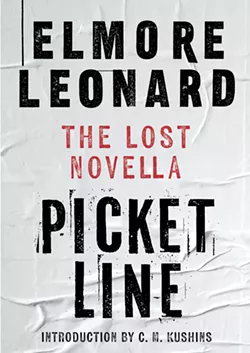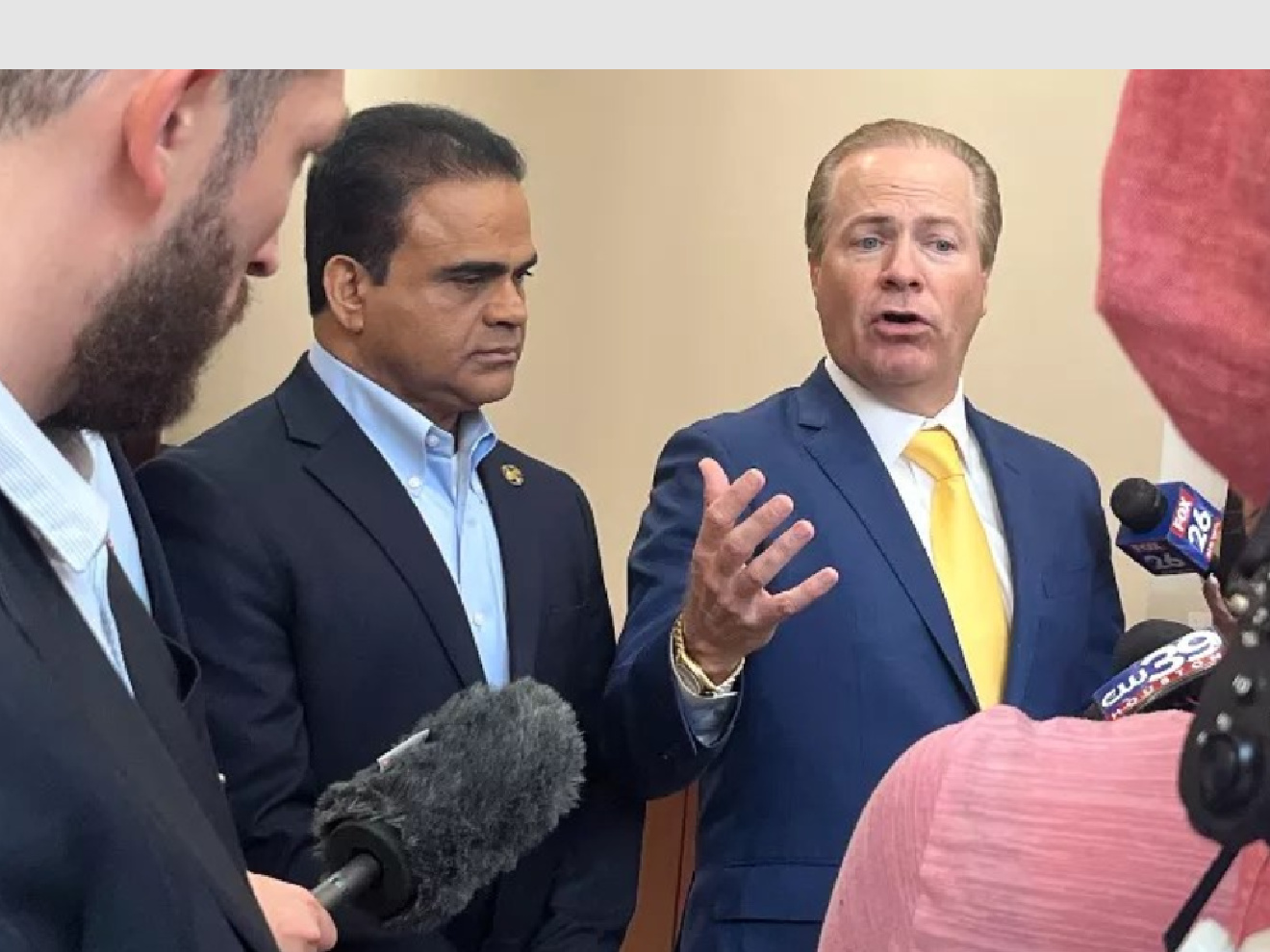Things to Do: Read Picket Line the Lost Novella by Elmore Leonard
By the time he died in 2013 at the age of 87, writer Elmore Leonard had long been revered as a master of not one by two genres of fiction.
In his lifetime, Leonard produced more than 40 novels of the Old West and contemporary American crime (mostly the latter); scores of short stories that spanned decades; and a shelfful of screenplays and movie treatments.
But there was one work by “The Dickens of Detroit” (or, as Time magazine’s J.D. Reed originally named him, “The Dickens from Detroit”), that sprung from his typewriter which combined a bit of all three. Written in 1970, it sat in Leonard’s archives for more than five decades. Until now, when fans can finally lay their eyes on Picket Line: The Lost Novella (128 pp., $24.99, Mariner).
In the course of researching his recent definitive biography Cooler Than Cool: The Life and Work of Elmore Leonard (and reviewed here in the Houston Press), author C.M. Kushins came across the manuscript. He also provides the novella’s introduction.
Picket Line was originally set to be published online only in 2000/2001 as part of the journalism and fiction website Contentville. But that digital domain went under before it could happen. So back on the shelf (or in the drawer) the manuscript went.
Kushins says that Picket Line features some of the most political content that Leonard ever got in his work. And much of the initial inspiration came from film producer Howard Jaffe to kickstart a proposed screenplay. Some of that plot also came from the meticulous pre-writing research that he always undertook. Originally all by himself and later with longtime researcher Gregg Sutter and private detective Bill Marshall.
“Elmore became fascinated with the social context of the picket line itself, and moreso the class divide,” Kushins offers via Zoom from his home in Berlin, Germany. “He got inside the characters’ heads to have each chapter have a different point of view. And maybe it even works better in prose form than as [a screenplay]. It eventually became the novel Mr. Majestyk—but with lots of action and machine guns.”
Picket Line centers on two friends (whose presence may not be entirely coincidental) caught up in a labor dispute involving migrant farm workers, their bosses, a charismatic Cesar Chavez-type leader, his #1 female mouthpiece and local law enforcement during a labor strike at a melon farm in Trinity, Texas. As mentioned, it started as an assignment for Leonard as a screenwriter-for-hire.
But to get his juices flowing, he instead produced this work in his more familiar medium as a jump start to the writing for film. Real-world research was also done for the “fruit picker” project then titled See How They Run.
The movie deal eventually fell through and Leonard never wrote the screenplay. Though he would go on to use characters, plot points, and settings in later works (including Mr. Majestyk, with its melon farm setting and subplot of organized labor).
So, in an essence, Picket Line is a synthesis of Leonard’s three favorite mediums for writing: the novel, the short story, and the screenplay. Right?
“I’m so glad that you asked that! Only writers would spot stuff like that!” Kushins laughs. “It’s definitely not the ultimate gateway if you want to get into Elmore, but you see all the writing he had been doing up until that point. This was the crushed rock that became his very recognizable literary voice later.”
Regarding Cooler Than Cool, Kushins says he initially by reading everything that Leonard wrote in chronological order and then prepared to move to South Carolina to investigate Leonard’s archives hosted at the University of South Carolina.
Only then did he approach Leonard’s son Peter (himself an acclaimed novelist), for a blurb on Kushins’ then-current biography of Led Zeppelin drummer John Bonham (Kushins also wrote a well-regarded bio on 2025 Rock and Roll Hall of Fame Inductee, the late Warren Zevon, called Nothing’s Bad Luck).
It started the conversation with the family, who then gave Kushins not only their blessing, but access to private archives and themselves and their memories as well.
As for the future, Kushins and his wife Diana, (A Holocaust scholar who he actually met while doing Leonard research at the University of South Carolina) will be moving back to the United States in September. The pair will be launching a digital magazine, Modern Occultist, next year.
Kushins is also currently working on a true crime nonfiction book about the soul music industry of the ‘60s and ‘70s as well as “making an attempt” at a crime novel, something he says was inspired by Leonard.
For himself, Kushins is aware of the tenet “don’t meet your heroes.” But he says that definitely did not apply to Elmore Leonard, with whom he struck up a written correspondence with as a youngster and then met in person once.
“He was very good to me when I was a kid, and he was such a gentleman when I got to meet him. And today his children are amazing,” he sums up. “And the book was as in depth as it was because of them. They’re very cool people.”

Reign Bowers is an outdoor enthusiast, adventure seeker, and storyteller passionate about exploring nature’s wonders. As the creator of SuperheroineLinks.com, Reign shares inspiring stories, practical tips, and expert insights to empower others—especially women—to embrace the great outdoors with confidence.






Post Comment